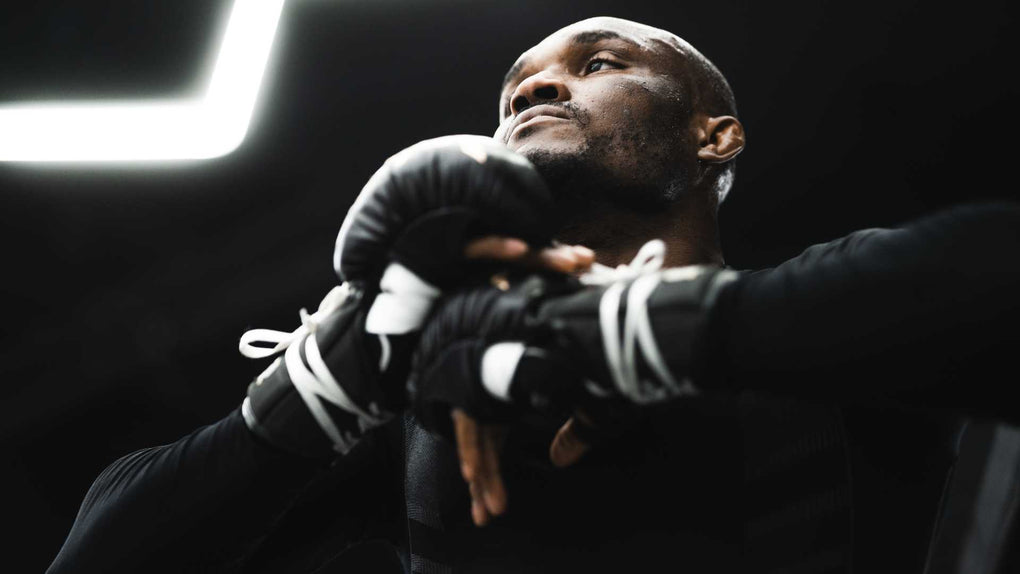TOP MMA COUNTER STRIKES WITH TREVOR WITTMAN & JUSTIN GAETHJE THE ART OF COUNTERING ISN’T JUST REACTION—IT’S PROVOCATION
In the world of mixed martial arts, counter striking is often misunderstood. It’s not just a reflex—it’s a trap. It’s not just defense—it’s high-level manipulation. And when you’re coached by 3X MMA Coach of the Year Trevor Wittman, alongside the explosive force of Justin Gaethje, you realize that the best counters aren’t reactive—they’re engineered. We'll break down the top MMA counter strikes.
In this session, Trevor breaks down how to use your opponent’s movement against them—disrupting rhythm, dictating tempo, and converting hand positions into openings. Let’s break down these pro-level insights and drills that elevate counter striking into a calculated, devastating art form.
HOW TO CONTROL HAND POSITIONS TO CREATE OPENINGS
Hand fighting isn’t just for the clinch. Wittman emphasizes that hand position is a gateway to control, whether you're inside range or out. The lesson kicks off with a deceptive combo:
• Throw a long hook to bait your opponent’s guard
• Rotate the shoulder to sell it
• Then sneak in a disguised jab down the middle
The key is misdirection. The long hook widens your opponent’s defense—then your jab slices through the gap. Trevor notes that from the overhead view, if you jab directly, you’ll hit the glove. But by opening the shoulder first, you mask the shot and thread the needle.
This principle applies beyond the jab. As Wittman says, “We’re forcing the hand to move, then countering off that movement.” That’s not just technique—it’s chess.
USING FAKE UPPERCUTS TO TRAP AND CORNER
One of Justin Gaethje’s signatures is using a fake uppercut to force his opponent into poor posture—lifting their center of gravity and putting weight on the back foot. The drill?
• Show an uppercut to elevate the opponent
• Fire a straight right once they’re off-balance
• Emphasize hip and chest momentum through the strike
Trevor coaches the nuance: pause just long enough to draw a reaction, then launch with full hip extension and shoulder drive. It’s not just about selling the fake—it’s about timing the disruption. When opponents shift their weight, they’re frozen. That’s when you strike.
This drill teaches control over rhythm and range—crucial for fighters who want to trap aggressive opponents or create angles for exits and follow-ups.
THE POWER OF PUSH-PULL: FAKING THE OVERHAND TO SET UP INSIDE SHOTS
“Push-pull, baby. Push-pull.” That’s Wittman’s rallying cry in this session, and it defines his approach to manipulating position.
In one of the most advanced sequences, Trevor and Justin break down how to fake an overhand—a common power shot—and use it to draw the opponent into a compromised stance.
• Fake the overhand to get the opponent leaning back
• Drive off the lead foot to close distance
• Launch a left uppercut into a cross combination
This setup is deadly because it breaks the opponent’s structure. When they lean away from the overhand, they unknowingly give you their centerline. Now you’re inside, and they’re off-balance. That’s checkmate.
Wittman emphasizes the hips here: “I want to see your hips coming through me.” It’s about total body commitment—mechanics that amplify force and reduce exposure.
COUNTERING ISN’T JUST A REPLY. IT’S A STRATEGY.
Throughout the session, Wittman redefines what it means to counter. It’s not just hitting back—it’s forcing reactions, then punishing them. This mindset applies whether you’re responding to a pivot, a stance switch, or a simple jab.
• Use your motion to bait a reaction
• Use your opponent’s correction to create timing windows
• Exploit their adjustment—not their attack
This is why the best fighters aren’t just fast—they’re first. Not because they throw first, but because they think first.
WHY THIS MATTERS FOR EVERY FIGHTER
Whether you’re a pro fighter or a dedicated practitioner, understanding this layer of counterstriking gives you the edge. You’re not just defending—you’re dictating.
This approach improves:
• Fight IQ: Understanding what triggers your opponent
• Efficiency: Winning exchanges with fewer, smarter movements
• Durability: Controlling pace reduces the damage you take
• Versatility: These principles apply across styles—Muay Thai, boxing, MMA
It’s no wonder that under Wittman’s system, fighters evolve into strategic assassins. Every move is deliberate. Every feint has a purpose. Every counter is a calculated risk with a massive reward.
TRAINING TAKEAWAYS: REPS WITH INTENTION
If you’re implementing this into your own training, here’s what to drill:
• Long hook → jab disguise
• Fake uppercut → straight right with hip drive
• Fake overhand → step-in uppercut + cross
• Work with a coach or partner who can mirror reactions, not just mitts
• Film from overhead to analyze hand position control and shoulder rotation
Train it slow. Then rep it under pressure. Then apply it in sparring. Mastery comes through the layers.
TRUSTED BY CHAMPIONS. ENGINEERED BY WITTMAN.
This is the real system—tested at the highest level, with athletes like Justin Gaethje, Kamaru Usman, and Rose Namajunas under Wittman’s wing. And it’s what built the foundation of ONX’s approach to both gear and guidance.
Every technique here was forged in the fire of competition—and now it’s yours.
THE FINAL WORD
Counter striking is more than reflex. It’s rhythm control, positional warfare, and psychological manipulation. And no one breaks it down like Trevor Wittman.
Whether you're just stepping onto the mats or chasing a title, these insights give you something deeper: the ability to see why counters work—not just how to throw them.
That’s the ONX difference. That’s the fighter’s edge.









Leave a comment